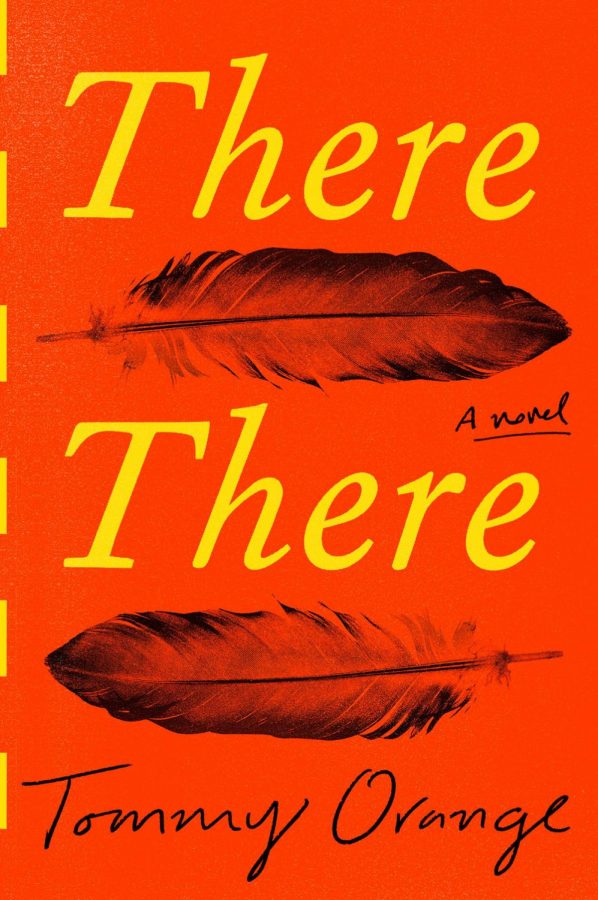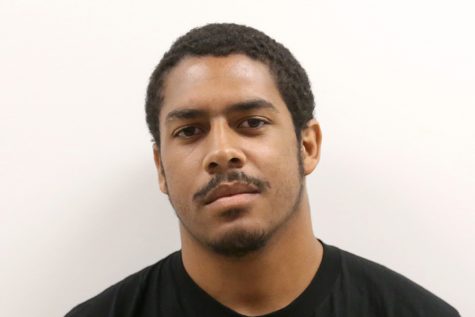Urban natives re-claim untold familial stories
Oct 23, 2019
Centuries of systemic erasure of Native American (Indian) culture other than street names and sports team mascots pushes the Indian populations living in cities into the shadows.
But Tommy Orange’s incredible novel “There, There” brings light to the urban Indians residing in the United States.
From the start, “There, There” makes it clear to the reader that the novel is telling an important story, with a prologue essay by Orange setting up a history of Indian populations and their oppression by colonial forces in the United States.
Orange, an Oakland native and an enrolled member of the Cheyenne and Arapaho tribes of Oklahoma, explores the lives of 12 different characters living in Oakland.
All the characters find themselves at the Big Oakland Pow Wow, a national gathering of Native Americans at the Oakland-Alameda County Coliseum.
Each character, like Orange himself, is an “urban Indian” characterized by Orange in his poignant and empowering prologue essay as, “We came to know the Downtown Oakland skyway better than we did any sacred mountain range, the redwoods in the Oakland hills better than any other deep wild forest. We know the sound of freeways better than we do rivers. Being Indian has never been about returning to the land. The land is everywhere or nowhere.”
The changing face of Oakland, and all communities natives called home for centuries, is a topic addressed by the title of the book, whose meaning is unraveled throughout the novel.
It notably makes this point by referencing novelist Gertrude Stein’s “Everybody’s Autobiography” where she returns home to Oakland and her old family farm, which has now been developed into urban housing. She famously says there “is no there, there.”
Before a single character is introduced, Orange encapsulates the themes of identity, which tie each character in the book together.
For teenager Orvil Red Feather, preparing for the pow wow is wrestling with feelings of validation and a lack of connection to their Indian heritage.
In the case of Calvin Johnson, his struggles with identity stem from a guilty rejection of his native heritage.
For many young urban Native Americans, feeling conflicted about their Indian identity is an issue, particularly for those with only one native parent like Edwin Black.
Black is a young, overweight and depressed man with a graduate degree in Native American literature. But he feels entirely disconnected from his Cheyenne heritage.
As each character is introduced, Orange’s brilliance as a storyteller becomes clear.
Each chapter bounces between the various characters giving a snapshot into their lives and what circumstances brought them to the Big Oakland Pow Wow.
He switches perspectives between first person and third person and each character’s struggles are representative of those modern Indians face today across America.
Alcoholism is touched on from a myriad of perspectives — from those in recovery, addicts, counselors and, in the case of Tony Loneman, living with fetal alcohol syndrome.
Depression, unemployment, homelessness and grappling with identity are all explored through the 12 relatable individuals.
Orange’s writing effortlessly slides off the page with paragraphs dense with meaning and deep cultural context for readers of Indian heritage or citizens of Oakland. His vivid and recognizable imagery of Downtown Oakland, or the sights and sounds of the Coliseum parking lot, give this book added authenticity.
As the pow wow nears, the thread of gun violence is woven into the plot line as one of the characters finds himself embroiled in a plot to rob the pow wow using 3D printed pistols.
This strikingly relevant plot line adds a rush of adrenaline to the novel.
Orange makes the robbers sympathetic figures grappling with their own issues and unfortunate circumstances, making crime feel like their only way out.
During Orange’s second essay interlude, he brutally describes the emotions of the Indians facing a gunman at the pow wow. However, as his words unravel, the deeper context of a historical and existential threat to Indian lives reveals itself.
It shows that the “gunman” is an ever-present threat.
Also, in the essay he describes the incredible diversity of the Big Oakland Pow Wow.
The gathering brings together Indians from all parts of the country from New Mexico, New York, South Dakota and Montana.
It also unites those who grew up in cities or reservations with all types of backgrounds, from full blood, quarter blood, enrolled members of tribes and dis-enrolled members.
“We all came to the Big Oakland Pow Wow for different reasons. The messy, dangling strands of our lives got pulled into a braid — tied to the back of everything we’ve been doing all along to get us here.”



